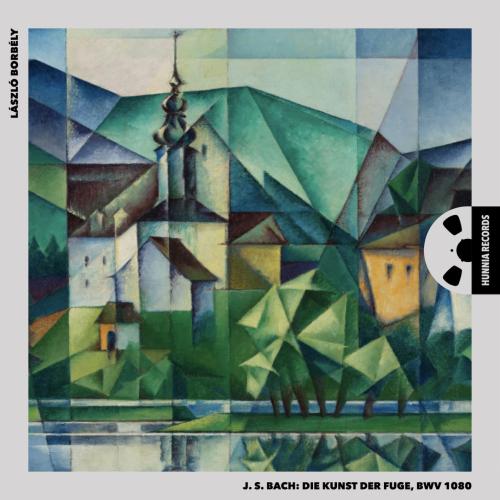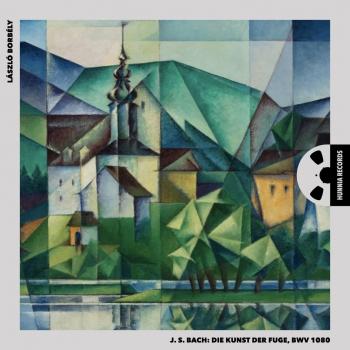
J. S. Bach, Die Kunst der Fuge, BWV 1080 László Borbély
Album Info
Album Veröffentlichung:
2022
HRA-Veröffentlichung:
16.06.2022
Label: Hunnia Records
Genre: Classical
Subgenre: Instrumental
Interpret: László Borbély
Komponist: Johann Sebastian Bach (1685–1750)
Das Album enthält Albumcover Booklet (PDF)
- Johann Sebastian Bach (1685 - 1750): Die Kunst der Fuge:
- 1 Contrapunctus 1 04:00
- 2 Contrapunctus 2 02:55
- 3 Contrapunctus 3 03:39
- 4 Contrapunctus 4 03:09
- 5 Contrapunctus 5 04:02
- 6 Contrapunctus 6 a 4 in Stylo Francese 05:02
- 7 Contrapunctus 7 a 4 per Augmentationem et Diminutionem 04:07
- 8 Contrapunctus 8 a3 06:25
- 9 Contrapunctus 9 a 4 alla Duodecima 02:29
- 10 Contrapunctus 10 a 4 alla Decima 05:43
- 11 Contrapunctus 11 a 4 08:51
- 12 Contrapunctus inversus a 4 – Forma recta 04:00
- 13 Contrapunctus inversus a 4 – Forma inversa 03:55
- 14 Contrapunctus inversus a 3 – Forma recta 02:26
- 15 Contrapunctus inversus a 3 – Forma inversa 02:26
- 16 Canon alla Ottava 04:17
- 17 Canon alla Decima in Contrapunto alla Terza 04:09
- 18 Canon alla Duodecima in Contrapunto alla Quinta 05:14
- 19 Canon per Augmentationem in Contrario Motu 04:28
- 20 Augmentationem in Contrario Motu 11:21
Info zu J. S. Bach, Die Kunst der Fuge, BWV 1080
Borbely says “Why am I attracted to such ‘insurmountable peaks’ as Bach’s Die Kunst der Fuge? I have always been captivated by researching complex musical structures and the regularities of music as language. Working on such a monumental and searchingly demanding work is challenging for me primarily because it is at this level that I can confront my own limits, my own “finiteness”. It becomes evident here that we, humans, can only aim at Perfection but will never be able to achieve it. This is the reason I never feel that my interpretation is “ready”. I would even abhor the idea. Why? Because one’s approach to a work will never be and can never be final. Bach’s music is also a continually forming, changing, infinite “game”, renewing itself again and again. Bach placed musical variability into divine invariability.
Bach’s Die Kunst der Fuge is a testament, which poses several unanswerable (or only partially answerable) questions in its incompleteness, and, in other aspects, giving ever-present research tasks for musicians who take on the challenge. The work is the perfection of the genre and construction of the fugue (meaning ‘running’ or ‘flight’ in Latin), Bach’s technical and structural faculties attaining their peak of complexity. Bach intended the work for the Leipzig Corresponding Society of the Musical Sciences, founded by his former pupil, Lorenz Christoph Mizler. He was a member of this body from 1747. Members were obliged to send a work each year to society and Bach wished to fulfil his obligation with this cycle in 1749. The time of composition of the work, however, is unclear, several signs pointing at Bach’s working on it from the early 1740s. It first appeared in print one year after Bach’s death, in 1751.”
László Borbély, piano
Keine Biografie vorhanden.
Booklet für J. S. Bach, Die Kunst der Fuge, BWV 1080











